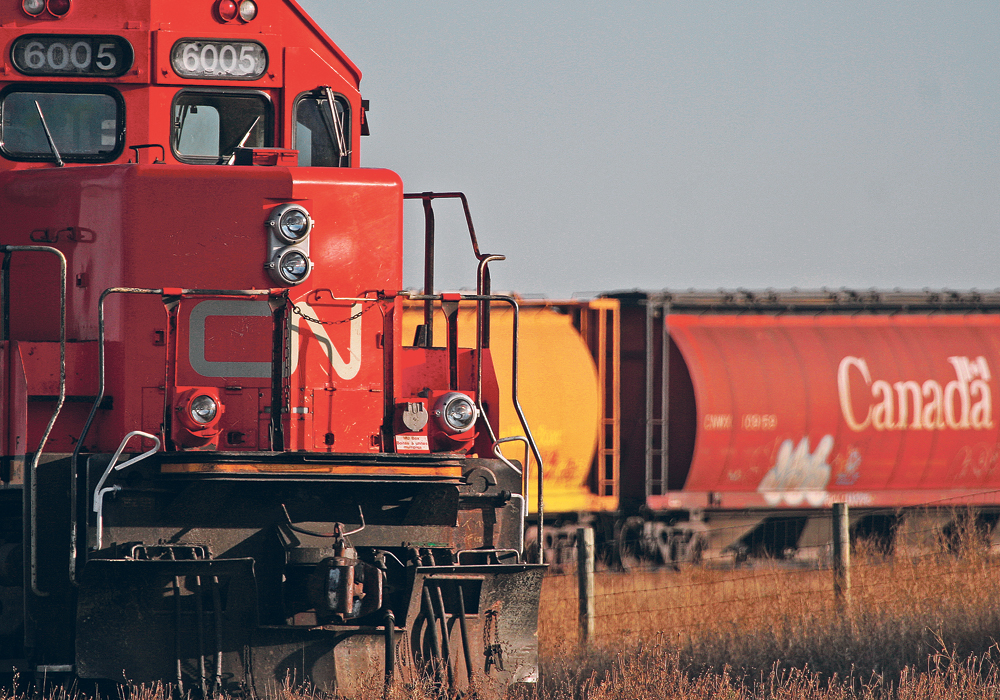Railway credits disciplined approach and investments made in the network for allowing it to resume normal shipping
Canadian National Railway has recovered from the recent labour strike, saying movement is back at a regular pace.
The company announced Dec. 12 that shipping returned to peak levels and that it took on all customer demand during the second week of December.
“After a tough harvest due to adverse weather and an eight-day labour stoppage, our railroaders have been hard at work to get movements back on track,” Allen Foster, vice-president of bulk at CN, said in a news release.
The eight-day strike in mid-November caused CN to operate at about 10 percent of capacity.
Read Also

Canada told trade crisis solutions in its hands
Canadians and Canadian exporters need to accept that the old rules of trade are over, and open access to the U.S. market may also be over, says the chief financial correspondent for CTV News.
Some provincial governments and producer groups had been urging the federal government to enact back-to-work legislation.
The nearly stopped railway caused potential propane shortages, particularly in Eastern Canada.
However, a deal between the Teamsters Canada union and CN was eventually struck. Shortly after the agreement was made, workers were back on the job and the company began its recovery plan.
“Our disciplined approach to recovery after the strike has allowed CN to return to a normal pace, as did all the investments we have made in track infrastructure and new locomotives over the past two years,” Foster said.
While Grain Growers of Canada is pleased that movement is back up to speed, it is still concerned that eight days of grain movement were lost, said Jeff Nielsen, chair of the organization.
“It’s great CN recuperated, but other than that, they are still behind,” he said. “It’s going to take time to catch up on those cars. They contain grain that would have already been shipped by now.”
Grain Growers, along with other producer groups, is urging that rail be declared an essential service, which would ward off future job action in the sector.
As for the dispute between CN and Teamsters, it largely centred around safety concerns and fatigue.
The new deal is currently being reviewed by members and must be ratified before it becomes officially binding.
The union thanked the federal government for not enacting back-to-work legislation.
Before the strike, CN had reported strong grain movement. It moved 2.8 million tonnes in October, which set a record for most grain ever moved in one month.
During the first two weeks of November, the company said it spotted 6,800 hopper cars.
Foster said the company will remain committed to delivering grain to customers as it enters the critical winter season.


















